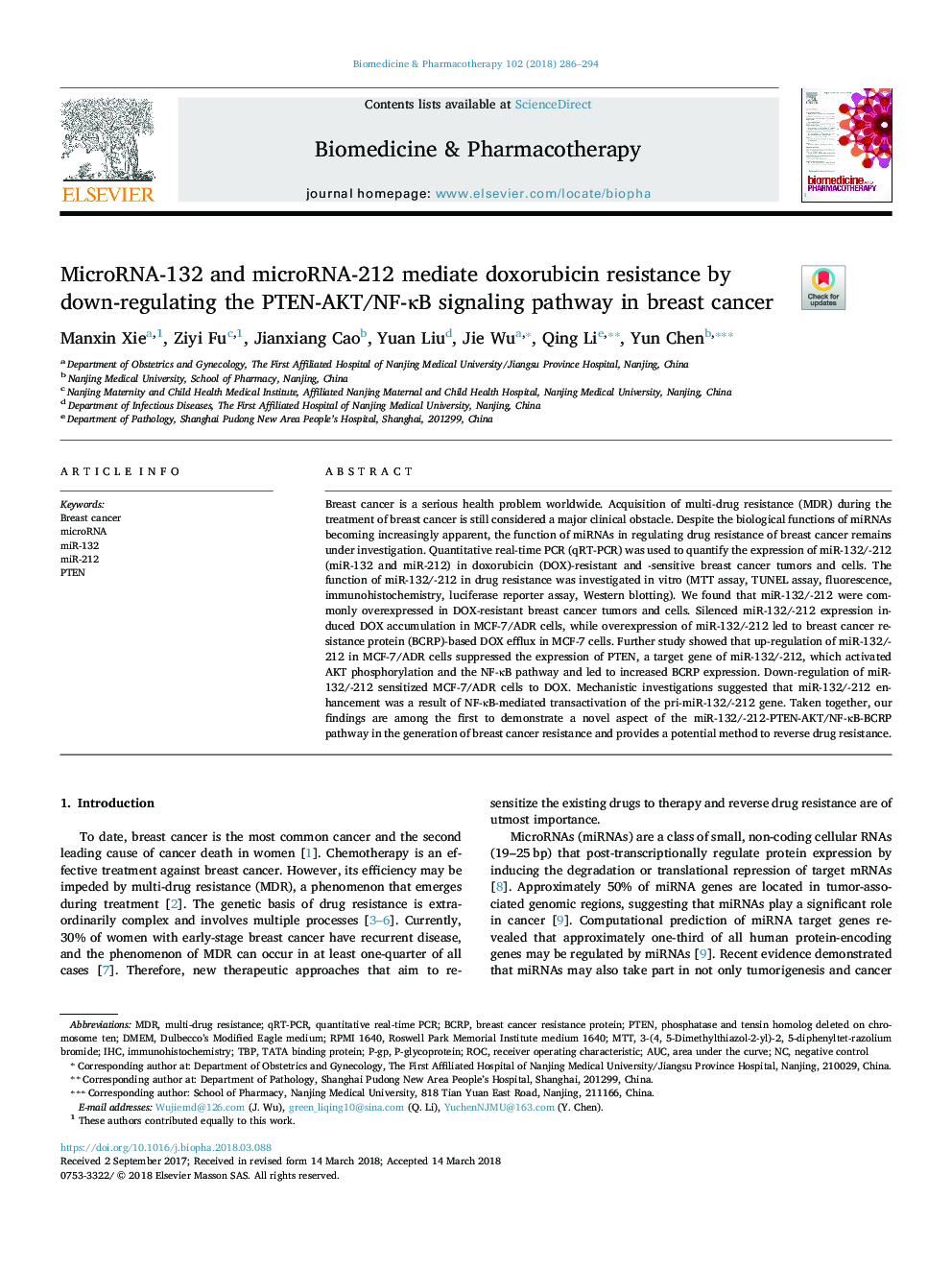| Article ID | Journal | Published Year | Pages | File Type |
|---|---|---|---|---|
| 8525442 | Biomedicine & Pharmacotherapy | 2018 | 9 Pages |
Abstract
Breast cancer is a serious health problem worldwide. Acquisition of multi-drug resistance (MDR) during the treatment of breast cancer is still considered a major clinical obstacle. Despite the biological functions of miRNAs becoming increasingly apparent, the function of miRNAs in regulating drug resistance of breast cancer remains under investigation. Quantitative real-time PCR (qRT-PCR) was used to quantify the expression of miR-132/-212 (miR-132 and miR-212) in doxorubicin (DOX)-resistant and -sensitive breast cancer tumors and cells. The function of miR-132/-212 in drug resistance was investigated in vitro (MTT assay, TUNEL assay, fluorescence, immunohistochemistry, luciferase reporter assay, Western blotting). We found that miR-132/-212 were commonly overexpressed in DOX-resistant breast cancer tumors and cells. Silenced miR-132/-212 expression induced DOX accumulation in MCF-7/ADR cells, while overexpression of miR-132/-212 led to breast cancer resistance protein (BCRP)-based DOX efflux in MCF-7 cells. Further study showed that up-regulation of miR-132/-212 in MCF-7/ADR cells suppressed the expression of PTEN, a target gene of miR-132/-212, which activated AKT phosphorylation and the NF-κB pathway and led to increased BCRP expression. Down-regulation of miR-132/-212 sensitized MCF-7/ADR cells to DOX. Mechanistic investigations suggested that miR-132/-212 enhancement was a result of NF-κB-mediated transactivation of the pri-miR-132/-212 gene. Taken together, our findings are among the first to demonstrate a novel aspect of the miR-132/-212-PTEN-AKT/NF-κB-BCRP pathway in the generation of breast cancer resistance and provides a potential method to reverse drug resistance.
Keywords
Roswell Park Memorial Institute medium 1640RPMI 1640P-gpMDRBcrpDMEMqRT-PCRTBPROCAUCDulbecco’s modified Eagle mediumMTTP-glycoproteinImmunohistochemistryIHCmiR-132Breast cancerphosphatase and tensin homolog deleted on chromosome tenMulti-drug resistancearea under the curveMicroRNAquantitative real-time PCRTATA binding proteinbreast cancer resistance proteinPtennegative controlreceiver operating characteristic
Related Topics
Health Sciences
Medicine and Dentistry
Oncology
Authors
Manxin Xie, Ziyi Fu, Jianxiang Cao, Yuan Liu, Jie Wu, Qing Li, Yun Chen,
